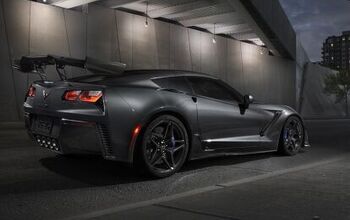QOTD: What Was the Golden Age of Pickups?

She was only sixteen… only sixteen… with her eyes all aglow.
“She” in this case was my 1995 Ford F-150 XL Regular Cab 4×2, and she was only sixteen thousand dollars plus change. Of course, the equipment list was pretty light: 300 cubic-inch inline-six, three-speed automatic, air conditioning, sliding rear window, argent styled steel wheels, argent rear bumper, full vinyl bench.
You can’t get a truck like her anymore, and in some respects that’s a relief, particularly when it comes to the absurdly skimpy legroom Ford regular-cab trucks had until the Great Change of 1997. Yet as I steer my Iowa-class 2017 Silverado Crew Cab Long Bed around town I can’t help but feel a bit of nostalgia for the sensible size, simple operation, and anvil toughness of the old trucks. Even the loaded-up Eddie Bauer F-150s of those years look fairly basic in retrospect.
My wife, the infamous Danger Girl, has similar feelings about the Chevrolet half-tons she drove around Albuquerque as a teenager. Her 1990 regular-cab 1500 (struck, but not quite totaled, by an undocumented dreamer) and 1995 regular-cab 1500 (struck and absolutely totaled by an undocumented dreamer being actively chased by police) were already pretty beat-up by the time she took delivery, but they each went well past the 150k mark with very few problems. Simple, reliable, and sensibly sized.
With the introductions of the ever-more-medium-duty-ish 2018 F-150 and ziggy-stardust-style 2019 Silverado, maybe it’s time to ask ourselves where the half-ton wave broke and finally rolled back.
On the Chevrolet side, I think the 1988-1998 GMT400 was probably the best compromise of size and capability. I prefer the styling of the “squarebody” predecessors, but they were pretty nightmarish from a safety perspective.
In terms of sheer truckin’ beauty, I don’t think you can beat a mid-80s Dodge Ram in midnight black with gold trim. But that’s just me.
What say you, B&B? When did pickup trucks reach a peak — and when did they go too far?
[Image: Ford Motor Company]

More by Jack Baruth
Latest Car Reviews
Read moreLatest Product Reviews
Read moreRecent Comments
- ToolGuy From the relevant Haynes Repair Manual:"Caution: The 4.6L models require a special tool to extract the water pump from the coolant crossover housing. This special tool is expensive and the removal procedure is difficult. Have the water pump replaced by a dealer service department or other qualified automotive repair facility if the tool is not available."One version of the tool is Lisle 14440; I paid $10.82 (less 5% discount, plus shipping).You can see why I never attempt my own maintenance or repairs. 😉
- Dave M. IMO this was the last of the solidly built MBs. Yes, they had the environmentally friendly disintegrating wiring harness, but besides that the mechanicals are pretty solid. I just bought my "forever" car (last new daily driver that'll ease me into retirement), but a 2015-16 E Class sedan is on my bucket list for future purchase. Beautiful design....
- Rochester After years of self-driving being in the news, I still don't understand the psychology behind it. Not only don't I want this, but I find the idea absurd.
- Douglas This timeframe of Mercedes has the self-disintegrating engine wiring harness. Not just the W124, but all of them from the early 90's. Only way to properly fix it is to replace it, which I understand to be difficult to find a new one/do it/pay for. Maybe others have actual experience with doing so and can give better hope. On top of that, it's a NH car with "a little bit of rust", which means to about anyone else in the USA it is probably the rustiest W124 they have ever seen. This is probably a $3000 car on a good day.
- Formula m How many Hyundai and Kia’s do not have the original engine block it left the factory with 10yrs prior?


































Comments
Join the conversation
I've owned lots of trucks over the years, but there is only one that I wish that I could have back again. My 1974 C-20 3/4 ton. With the factory optioned "high torque LS9" 350 V-8 and the 350 turbo tranny. Although it was equipped with power steering and power brakes, it was missing any and all electronics and had zero emissions controls. If something broke, you knew what and where within seconds of opening the hood. You could sit on the inner fender and work on the motor yourself. I miss that simplicity, now when I open the hood the tubes and wires and sensors are endless, every spare inch of underhood space is taken up with some unknown system. I think the 1973-1979 chev and GMC pickups were the high water mark for trucks (as trucks should be). If you had one, chances are you had a farm, a business, a trailer. You weren't a poseur driving a "bro-dozer" with neon glow lights.
Sometimes I still miss my '95 F-150 (SuperCab short bed XLT 4x2, 5.0, 4R70W, with a/c, power driver's seat, Alcoas), but I don't miss 13 mpg, and my Tacoma (4.0 V6) could smoke it in a drag race, and gets 16-17 mpg. It was a nice truck (stickered for $21,600, I got it for $9k. I put 214k on it in 17 years, and it was amazingly reliable, at least until it developed a random hard start/no-start problem in the last year.